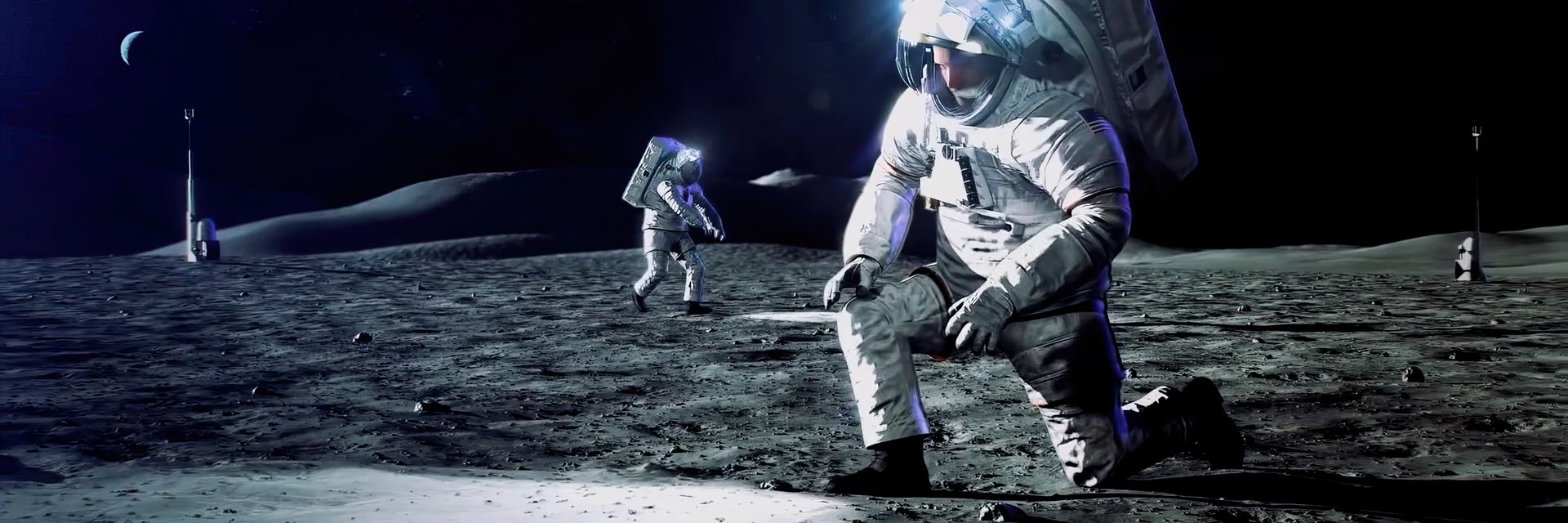Will future space explorers reach an exoplanet and be transformed into a new species – “Homo spatium”?
◊
Space is the new frontier.
In writing and producing my documentary series Space: The New Frontier, which is streaming on MagellanTV, I’ve read a lot about the subject matter, conducted extensive research, and interviewed scientists and engineers in their specialist fields. This has enabled me to sit back and look at the big picture of space research, technology, exploration, and the people who put their lives on the line to go into space.
I ask myself: What’s the goal? Why do we do it? What sort of result does our civilization seek, or need? There is a lot to think about. However, if we look down the road, a long way down the road, it seems apparent that the goal is the survival of the species, of humanity and our civilization.
As Konstantin Tsiolkovsky is often quoted: “A planet is the mind’s cradle, but one cannot live in a cradle forever.” We need to spread out and colonize the stars.
For our species to survive, we know that one day our own star, the Sun, will die and consume the Earth as it goes. Beforehand, we could suffer innumerable natural and man-made disasters, or stupidly blow ourselves up with nuclear weapons. So, going “off world” is not a fancy but a must.
Check out Space: The New Frontier - all-new Season Five - on MagellanTV.
First Steps and the People Who Will Take Them
First stop … the Moon. This is a very important step and well underway. There we will learn how to utilize essential natural resources – oxygen, fuel, and water. We will then go on to develop the ability to smelt and process metals, to build permanent structures on the Moon, shelters for radiation protection and living quarters, safe environments to grow food, and manufacturing facilities. Eventually, Moon outposts will trade resources with Earth much as New World colonies did with their Western capitals centuries ago.
Mining the asteroids and settling on Mars will be the next great advances, with new problems to be solved. The technology involved won’t be hard. We as humans are good at innovation, given the time and resources. And we have plenty of prospective space travelers with “the right stuff.”
Astronauts go through a rigorous selection program; they are indeed special people – intelligent, capable, brave, and able to get along with others in close quarters. They aren’t averse to living in a tiny, cramped artificial environment away from friends and family for long periods of time.
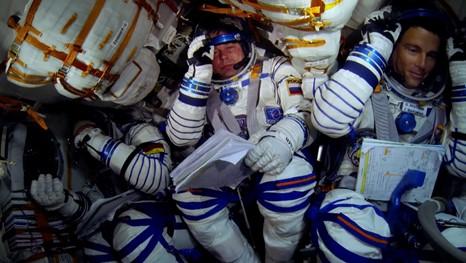
But, a one-way trip to Mars, over several months in a tiny space craft with many other colonists? To live on the planet in a sealed environment, always fearing a decompression incident? Never venturing outside without donning a space suit, not feeling the wind in your face or the soil under foot, for the rest of your life? Could you? Would you?
Not to mention that you will have strictly limited resources – only what you brought with you. Sure, you will be able to extract air and water, grow food, but without constant resupply, you will have none of the luxuries we have come to enjoy. Just think: It could be a long time between running out of instant coffee and eventually growing reasonable coffee beans, and, of course, building the roasters, grinders and espresso machines. (And don’t forget the cheese and wine.) It will be a tough gig for any astronaut to endure, let alone a less-trained colonist.
Space Travel Is Inherently Dangerous
Reducing the time spent traveling to and from these destinations is crucial due to the effects of space travel on the human body.
For years, scientists have been studying the effects of microgravity on astronauts living on the International Space Station, and the results are not good. Long-term effects include decreased blood volume, hypotension (low blood pressure) and cardiac dysrhythmias, weight-bearing bone loss, muscle atrophy, alteration to the sensors and orientation, and the little-studied effects of changed pressures in the cerebral spinal fluids. The problems can be quite dramatic, and irreversible after a time. Living on the Moon or Mars, where gravity is far less than on Earth (16% and 38% respectively, and zero in microgravity), will undoubtedly have a major impact on the first colonizers.
Then, there is deep space radiation. Both solar and cosmic radiation are high-energy ionizing types of particles, are hazardous to DNA, and can be expected to cause cancer and degenerative diseases. So, getting to a destination fast is crucial. That is why the next bold step beyond our Solar System to distant planets is tougher still.
Many Worlds to Be Explored
We have now confirmed more than 5,200 exoplanets orbiting other stars, some even fairly close by galactic standards. Several of the exoplanets are even Earth-sized and reside in the habitable zone of their stars, well worth a close look.
Let’s keep it in our neighborhood, say within 20 light years of Earth. The nearest such exoplanet is Proxima Centauri b, a mere 4.2 light years. Then there is Ross 128b, Luyten b, Wolf 1061c, Gilese 876 d and Eridani b, c and d. The list grows as we venture further out.
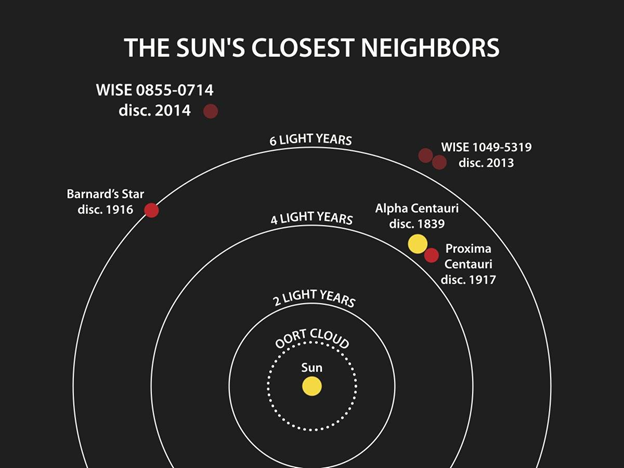
The Sun’s closest neighbors. (Source: NASA)
The fastest spacecraft to date is the Parker Solar Probe. At top speed when it passes closest to the Sun, it currently achieves a velocity of around 163 kilometers (100 miles) per second. It will eventually break that record and reach around 692,000 kilometers (430,000 miles) per hour – that’s .064% of the speed of light. To reach the nearest exoplanet at that speed would take roughly 64,000 years. That’s a long trip!
Only increased speed will make such a journey viable. So we need to develop some form of nuclear or fusion propulsion, combined with ion thrusters and solar wind sails to maintain acceleration for half the trip, then deceleration for the second half. Let’s be optimistic and say we can achieve 10% light speed – that is still a minimum of 42 years to travel to Proxima Cen b.
The key to long-distance space travel is speed.
In this scenario, we could either put the crew into stasis (suspended animation) to conserve valuable resources or build a massive vehicle that would house the crew and their descendants, and feed, clothe, and educate them in a multi-generational journey with all the perils of space flight.
Quite a challenge. And what would happen when they get there?
Planetary Beachhead
On arrival at the new world, they would maintain an orbital station, dispatch probes to study the planet, launch satellites for global positioning and communications, etc. Then, when ready, they’d descend to the surface and, with much fanfare and celebration, step onto the “new Earth.” Then would come the catch.
The human microbiome within our bodies and on our skin forms a large basis for our existence. They thrive in our intestines, urinary tracts, throats, noses, and on our epidermis. Humans have evolved within our environment and become symbiotic with other forms of life, namely microbes and bacteria.
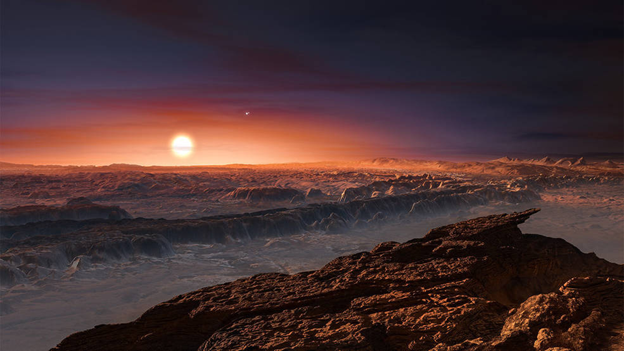
Artist’s rendering of the surface of Proxima Centauri b (Credit: ESO/M. Kornmesser via NASA)
Bacteroides and their variants live specifically in our intestines. A veritable zoo of organisms, E. coli, Staphylococcus, species of Haemophilus influenzae, Klebsiella and its variants thrive inside us and on our epidermis. However, these same organisms can cause all sorts of diseases: from diarrhea, urinary tract and respiratory infections, and pneumonia to heart valve infections and meningitis, even leprosy and tuberculosis. Animals, primates and humans have evolved in cohabitation with these organisms over millions and millions of years.
Now, place a human explorer and all their microorganisms into a new, never-before-exposed environment on another planet, harboring its own indigenous life forms, including their own versions of bacteria, viruses, fungi, and other microorganisms that have evolved along a different path than our own.
Even if the world were “Earth-like,” it would be prudent to check the atmospheric gasses, pressure, temperature, radiation levels, gravity, and so forth. Imagine the first explorer stepping out of their landing craft and taking in a deep breath, gazing at the panorama. What next?
3 Scenarios for the First Exoplanet Colonists
Three things could potentially happen at that historic moment: First, the environmental micro bacteria floating in the air, existing on the ground and in the water, could invade the human host. This indigenous organism could immediately overwhelm the human’s immune system, destroying or mutating their biome. An anaphylactic reaction – collapse of cardio-pulmonary functions – could lead to a quick death. Or, perhaps the reaction would be slow, undetected at first, until the human’s body begins to malfunction as their microbiome is destroyed by invaders, and the host dies.
The second scenario proceeds in the opposite direction. Humans step onto the new world, and the bacteria the humans are carrying quickly inundate the environment, killing everything they come across. Local bacterial organisms with no defense from the intruders would die, local flora would perish, the food chain would collapse, and indigenous life would be killed off.
But there’s a third possibility. Let’s say the colonists on Proxima Cen b have been able to survive on the new world, adapting to the new environment without catastrophe – no need to live in biohazard suits forever. They erect a settlement, dismantle spacecraft, and fire up a modular fission or fusion reactor to power the colony until they can build dams, solar farms, and other infrastructure to jump-start a new civilization.
There will be accidents, disease, and attacks by the local apex predator. Adult numbers will be reduced, placing more pressure on child-bearing couples. As children begin to be born, they need to be educated to replace the aging colonists and their specialties; doctors, surgeons, biochemists, engineers, IT experts, pilots, and others on a list that will grow ever longer.
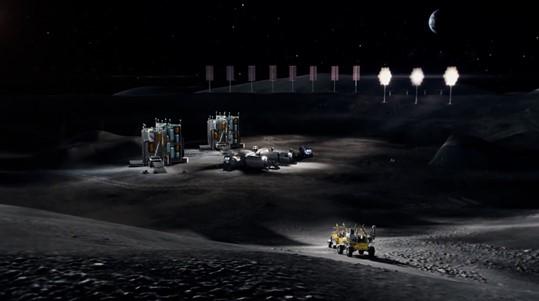
Computers and AI will be able to help with this training over the years, but not all the children will be acceptable candidates; some specialization may be lost.
Second-generation colonists will expand the population, needing more food, more water, etc. Then things will start breaking down – computers and other electronic equipment. There will be spares, but they too will have a limit.
Entire countries with manufacturing facilities and trained workers can’t make some of the technology that will be flying with the colonists. They will have no hope of replacing parts long-term. Computers will die and the stored knowledge will be lost.
Consequently, further generations will have far less education, the civilization will recede backwards – how far? Anyone’s guess, the pre-industrial age perhaps? Finally, when the nuclear reactor goes offline and no one knows how to fix it, the limited number of solar panels brought with them will have a use-by date as well, lights out.
Search Party Discovers a New Human Species
But let’s be optimistic. In a best-case scenario, the mission is successful, the community of colonists thrives, and an inevitable process of biological adaptation occurs.
Imagine, for example, that the guest planet isn’t just like Earth: It’s larger, has stronger gravity and a denser atmosphere, shorter rotation periods, fewer useful minerals. Under those conditions, the human form will change quickly: shorter stature, circadian rhythms destroyed, lung capacity reduced, hearts enlarging, thicker bones, changed internal biochemistry, and, of course, the local microorganism infestations. In only a few generations, our cousins on the distant planet will look rather different from us back here on Earth.
If, after several decades, faster-than-light travel is perfected on Earth, search parties could be sent to see how the colonists fared. What the relief crews find would truly depend on what sort of planet was colonized. Homo sapiens sapiens would meet Homo spatium – space man. He might be a short, stocky, “neanderthal-like” humanoid with a liking for bawdy jokes; or a tall, thin, grayish fellow with large, oversized eyes admiring your landing craft. The possibilities are as endless as exoplanets in the heavens.
However, we will never know unless we go.
Ω
Living in Melbourne, Australia, Andrew Thomson is a television production specialist with 45+ years experience in the broadcast and streaming industry. He has run his own production company, Astro Media, since 2004, producing original documentary programs for the international market. He is an animal lover and, for a hobby, has studied Paramedical Science. He occasionally works night shifts onboard an ambulance, looking to develop some sort of empathy for humans.
